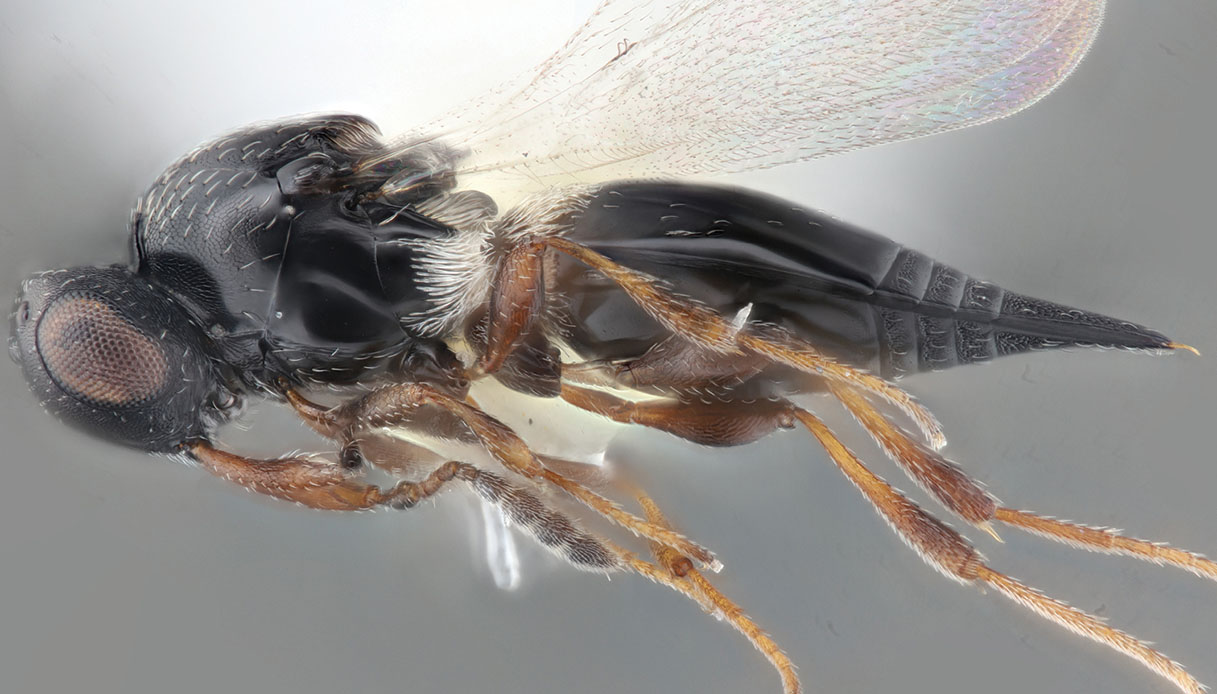Let’s face it: read about one new parasitic species can inspire a little fear, especially considering the dense dystopian and science fiction literature that has made these creatures the fulcrum of various terrestrial catastrophes. Still, not all evils have a silver lining: the new parasitic wasp discovered in Minnesota is the prime example. And her appearance explains how it is nature itself, more often than not, that sets limits to the ongoing disasters.
The problem of soybean crops
As always, to better understand the discovery, it is good to broaden the gaze and place it on the entire context. It was back in 2018 when some farmers who were in charge of cultivating soybeans in Minnesota realized they had a natural enemy: a kind of devouring gnat always dedicated to consuming fruit plants. The merciless action of this insect has created quite a bit of damage, with entire crops affected by its small tusks.
Nonetheless, the farmers of Minnesota never wanted to use chemical agents: instead, they appealed to researchers at the University of Minnesota, who for several years have been trying their hand at monitoring the gnat, trying to biologically controlled the insect and exploiting natural enemies. However, they could not imagine that nature was taking its course and that a new natural enemy would come to change the cards on the table.
The parasitic wasp and the midges
During the biological monitoring and control maneuvers, researchers at the University of Minnesota have noticed something strange. In particular, the anomaly was noticed by Dr. Gloria Melotto, who had recently collected samples of soybean plants infested with midges on a farm. Dr. Melotto took the samples to the laboratory and, observing the hatches, made one strange discovery about insects: some of them behaved in a strange way, almost self-defeating.
Thus, Melotto and the other members of the team decided to carry out further analyzes and it is precisely through these that they realized that some flies were hiding among the midges. tiny parasitic wasps. And not only that: they have also discovered that it is one brand new speciesnever seen before, which while replicating i parasite behaviors most known had never been identified or seen in action.
A natural process
The entire team of researchers closely monitored the collected insect samples and figured out how the new parasitic wasp works. The insect is of dimensions very similar to those of midges, therefore it is easily confused with them. In moments of greater weakness or confusion (those of meals, for example) the wasp manages to make the gnat ingest its eggs, which, instead of being digested, grow undisturbed inside the host.
The gnat gradually loses control until the wasp growing inside it does not takes control starting to come out: at that point, the gnat will be just a cocoon and its body will be destroyed to make room for the new insect. For scientists at the University of Minnesota this natural process is essential to limit the damage of soy flies, but studies are still underway to understand how often wasps engage in this behavior.
